The Trango Towers – The hardest alpine rock climbing in the world
Situated in the north of Pakistan, the Trango Towers stand as a challenge to rock climbers from all over the world. These are a family of rock towers that have one of the largest cliffs in the world.
They can be found in Gilgit-Baltistan, located north of the Baltoro Glacier. The Trango Towers are part of the Baltoro Muztagh which is a sub-range of the Karakoram range. The king of these rocks is the Great Trango Tower which has the largest, nearly vertical drop in the world at 20,623 feet (6,286 meters) high.
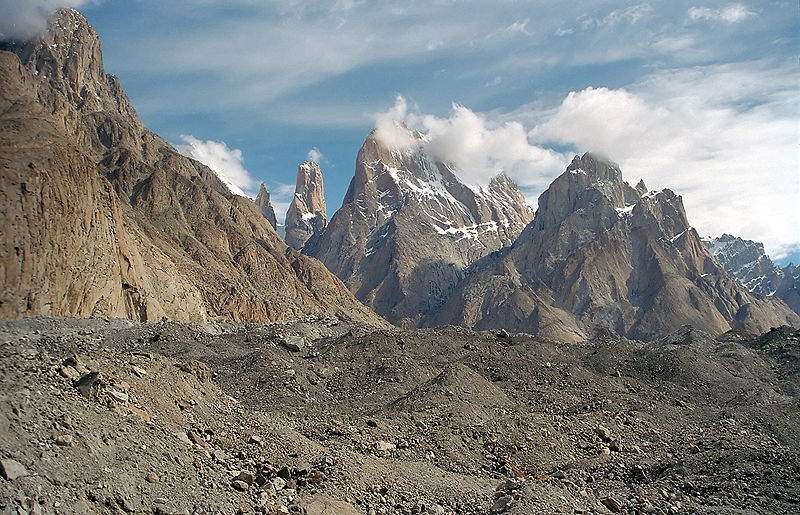
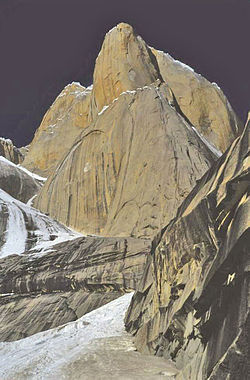
According to Kelly Cordes, the alpinist who has already “conquered” summits in Patagonia and Alaska, “The Trango Valley must be the most spectacular alpine rock climbing valley in the world.” Even though El Chalten in Patagonia is a crowded alpinist spot that offers chocolate and Wi-fi, the real climbing “initiation” is the Trango Tower.
To begin with, it requires visas, all kinds of permits, big wall mileage to prove you are a serious rock climber with a history of alpinism under your belt. Then there’s a three-day march to a remote base camp. Oh, just a bit of Information for you, in 2013, nine climbers were shot dead by 16 militants.
The Trango Towers are situated on a ridge orientated northwest-southeast. They lie between the Trango Glacier on the west and the Dunge Glacier on the east. The Great Trango is a large massif itself and has four identifiable summits: West 20,417 feet (6,223 meters) high, East 20,443 feet (6,231 meters) high, South or Southwest 20,510 feet (6,250 meters) high, and Main 20,623 feet (6,286 meters) high.
The Towers are a complex combination of vertical to overhanging headwalls topped by a snowy ridge system, steep rock faces, snow and ice gullies.
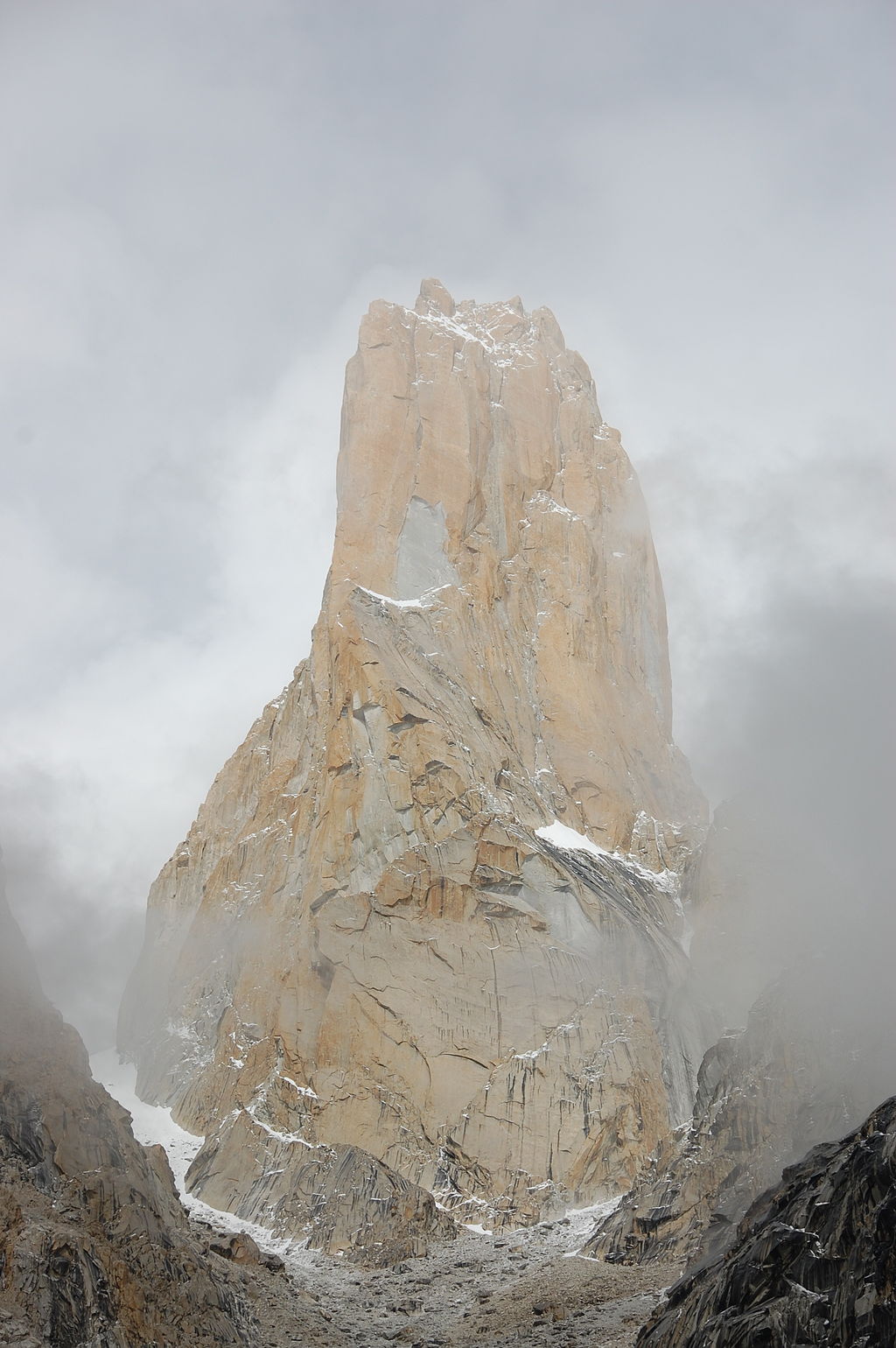
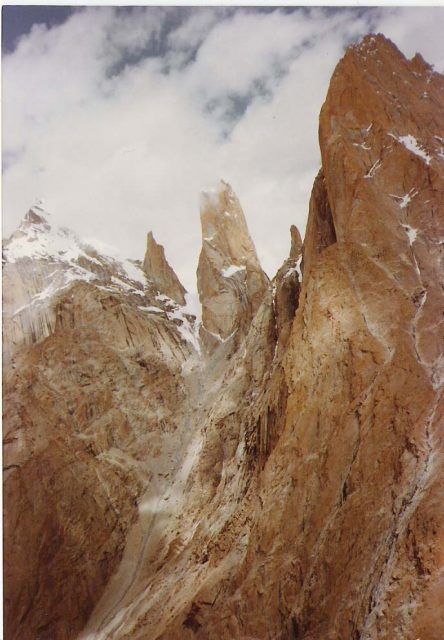
It’s no wonder that the Trango Towers group is one of the most challenging, difficult, and significant climbs on the face of the Earth. No matter which route is chosen, they are all equally hard and require huge technical climbing skills. On top of all that, they’re high altitude climbs, and that needs to be taken into consideration as well.
In the history of climbing, only two Pakistani rock climbers are known to have climbed the Trango Towers – Usman Tariq and Imran Junaidi. They were the first locals in 2013 who attempted the Trango tower but due to a heavy snowfall were forced to descend from Camp 2. However, after two days, they climbed a virgin line at Trango Braak, reporting difficulty of 5.10, A1. In 2014 these same Pakistani climbers, even though with a lot of difficulties, opened the new route 5.10d, A0.
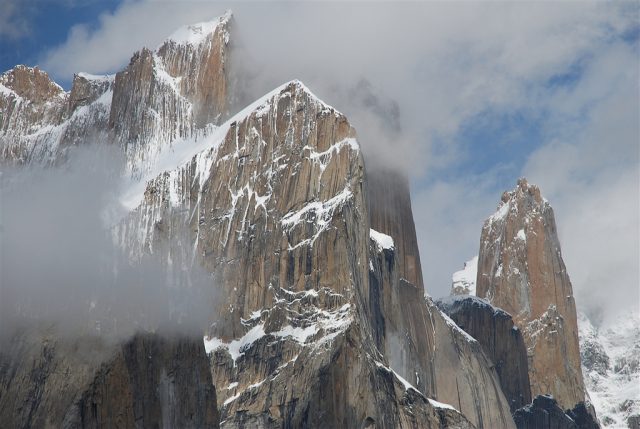
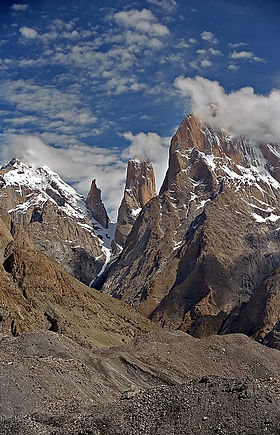
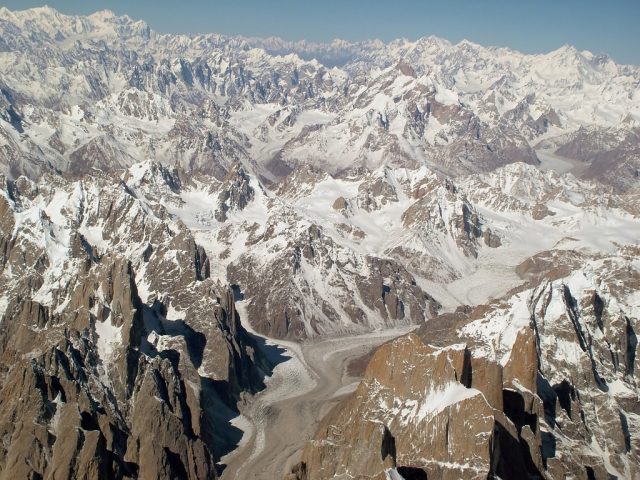
The first people ever to climb the Great Trango were Dennis Hennek, Jim Morrisey, Galen Rowell, Kim Schmitz, and John Roskelley in 1977. They started from the west side of the Trango Glacier, and climbed gullies with rock faces and ice ramps, and finished on the upper South Face.
In 1984, the East Summit of the Great Trango was climbed by the Norwegians Finn Dæhli and Hans Christian Doseth. Unfortunately, they both died on the descent.
In 1992, John Middendorf and Xaver Bongard took a parallel route to the one that the Norwegians had taken eight years previously and successfully climbed the East Summit and returned, naming their route “The Grand Voyage.” This one, and also the ill-fated climb of the Norwegians are called “perhaps the hardest big-wall climbs in the world.”
If you have any comments then please drop us a message on our Outdoor Revival Facebook page
If you have a good story to tell or blog let us know about it on our FB page, we’re also happy for article or review submissions, we’d love to hear from you.
We live in a beautiful world, get out there and enjoy it.
Outdoor Revival – Reconnecting us all with the Outdoor





